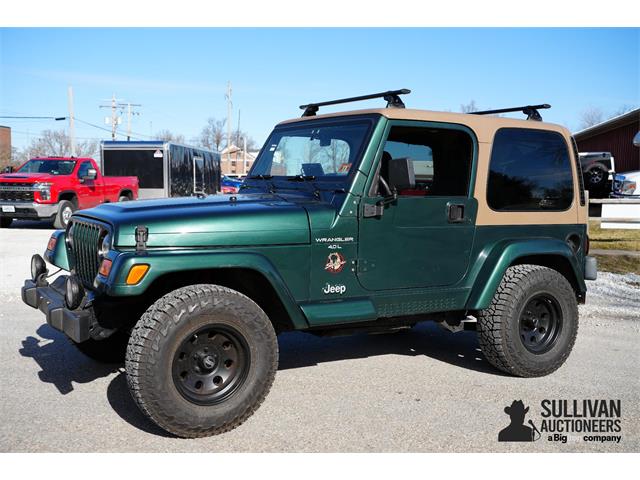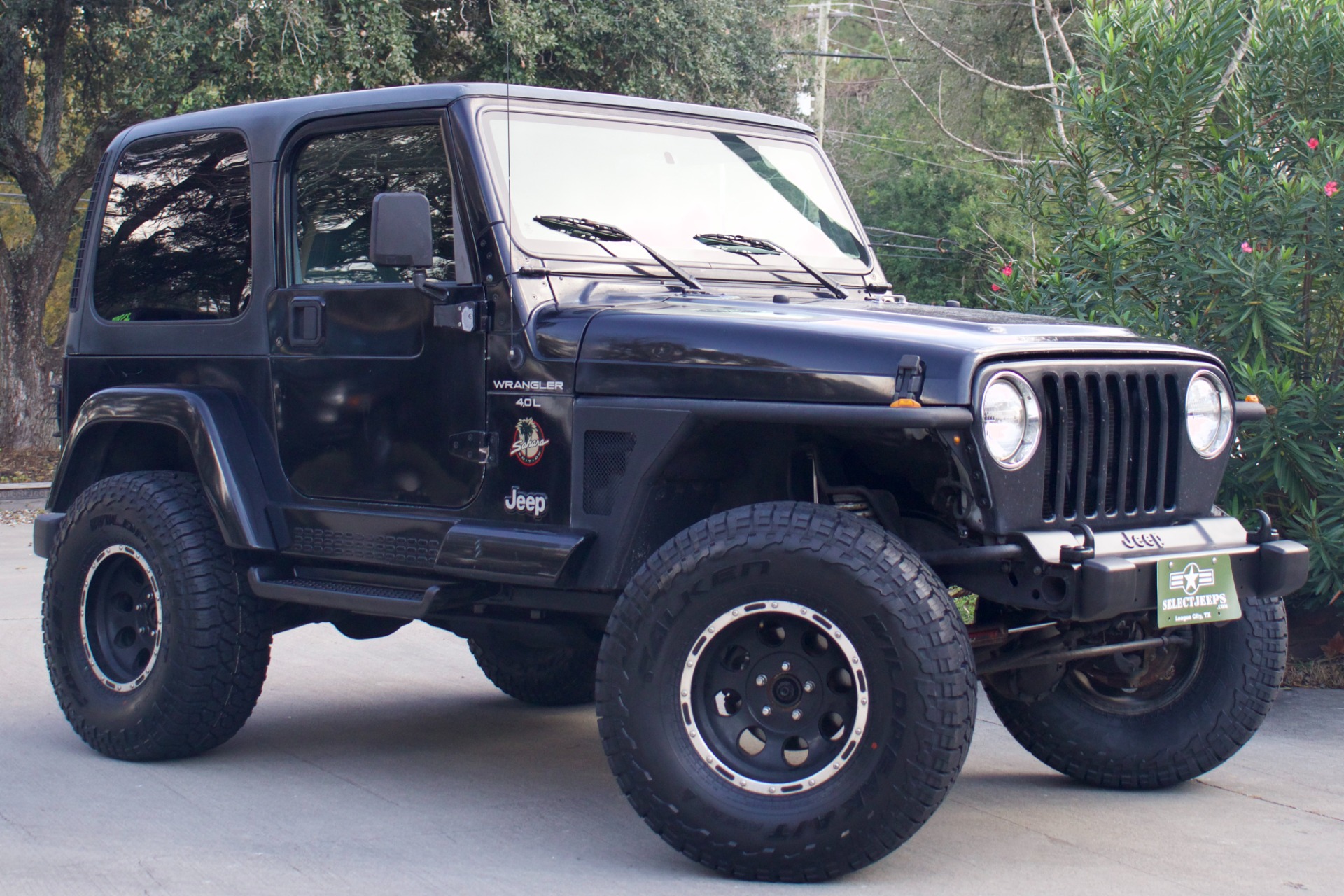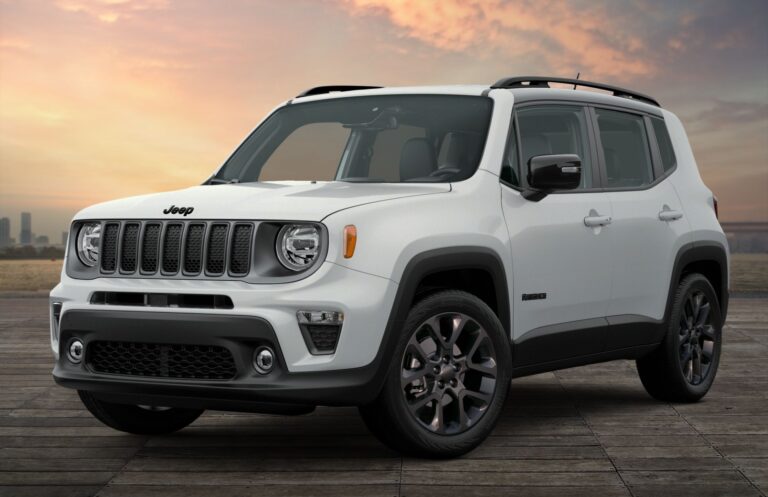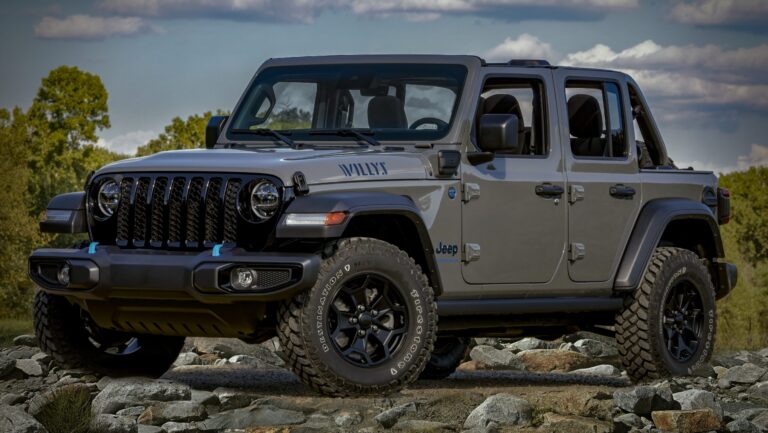1997 to 2000 Jeep Wrangler For Sale: A Comprehensive Buyer’s Guide
1997 to 2000 Jeep Wrangler For Sale: A Comprehensive Buyer’s Guide jeeps.truckstrend.com
Introduction: The Enduring Appeal of the TJ Wrangler
For many off-road enthusiasts and casual adventurers alike, the Jeep Wrangler represents the pinnacle of go-anywhere capability and iconic American design. Among its storied lineage, the 1997 to 2000 model years, part of the beloved TJ generation, hold a particularly special place. These vehicles seamlessly blend the classic, instantly recognizable aesthetics of earlier Wranglers (round headlights, flat fenders) with a significant leap forward in ride comfort and off-road articulation, thanks to the introduction of coil spring suspension.
1997 to 2000 Jeep Wrangler For Sale: A Comprehensive Buyer’s Guide
Often considered the "sweet spot" by purists, the 1997-2000 TJs offer a fantastic balance: they’re more refined than the leaf-sprung YJs that preceded them, yet retain a simplicity and compact footprint often lost in the larger, more complex JK and JL generations. For sale today, these Wranglers represent not just a mode of transport, but a gateway to adventure, a canvas for customization, and a piece of automotive history that continues to command respect. If you’re looking to buy a classic, capable, and highly customizable 4×4 without breaking the bank, a 1997-2000 Jeep Wrangler might just be your perfect match.
Why the 1997-2000 TJ is a Desirable Buy
The TJ Wrangler, specifically the early production years from 1997 to 2000, offers a unique blend of attributes that make it highly sought after in the used market:
- Coil Spring Suspension: This was the game-changer. Unlike the harsher leaf-sprung YJ, the TJ’s coil spring setup significantly improved on-road comfort and vastly enhanced off-road articulation, allowing wheels to maintain contact with uneven terrain more effectively.
- Robust 4.0L Inline-Six Engine: Many TJs from these years are equipped with the legendary AMC 4.0L (242 cubic inch) inline-six engine. Renowned for its bulletproof reliability, strong low-end torque, and ease of maintenance, this engine is a major draw for buyers looking for longevity and power for trails or daily driving.
- Classic Aesthetics: With its iconic round headlights, seven-slot grille, and flat fenders, the TJ perfectly encapsulates the traditional Jeep look that has captivated fans for decades.
- Ideal Size: The TJ is smaller and lighter than later Wrangler generations, making it incredibly agile on tight trails and easier to maneuver in urban environments, yet it offers more interior space and comfort than the YJ.
- Unmatched Aftermarket Support: Due to its immense popularity and long production run, the TJ enjoys an unparalleled level of aftermarket support. From lift kits and armor to engine performance parts and interior upgrades, virtually any modification you can dream of is available, allowing for endless customization.
- Simplicity and Maintainability: Compared to modern vehicles, the TJ is relatively simple mechanically. This translates to easier DIY repairs, lower maintenance costs, and fewer complex electronic systems to troubleshoot.
- Potential for Appreciation: Well-maintained, unmolested TJs, particularly those with the 4.0L engine and minimal rust, have shown a trend of holding their value or even appreciating, making them a potentially sound investment.

Key Features and Specifications (1997-2000)

Understanding the core components of these early TJs is crucial for an informed purchase:
- Engine Options:
- 2.5L (150 cu in) I4: Standard on SE models. Produces around 120 horsepower. Adequate for light duty and city driving, but can feel underpowered, especially with larger tires or on highways.
- 4.0L (242 cu in) I6: Standard on Sport and Sahara models. Produces around 180-190 horsepower and significantly more torque. This is the preferred engine for most buyers due to its power, reliability, and longevity.

- Transmission Options:
- Manual:
- 1997-1999: AX-15 5-speed (paired with 4.0L)
- 2000: NV3550 5-speed (paired with 4.0L)
- 1997-2000: AX-5 5-speed (paired with 2.5L)
- Automatic:
- 3-speed 32RH (paired with 4.0L)
- 3-speed 30RH (paired with 2.5L)
- Manual:
- Transfer Cases:
- NP231 Command-Trac: Part-time 4WD system with 2Hi, 4Hi, and 4Lo settings. Standard on most TJs and highly reliable.
- Axles:
- Front: Dana 30 (standard on all TJs).
- Rear:
- Dana 35 (standard on most TJs). Generally considered weaker for heavy off-roading or large tires.
- Dana 44 (optional upgrade, often found on Sport and Sahara trims with towing packages). Much stronger and highly desirable.
- Suspension: Quadra-Coil suspension with solid axles front and rear.
- Body Styles: Two-door convertible with removable soft top or optional hardtop.
- Trim Levels (Common for these years):
- SE: Base model, typically with 2.5L engine, basic interior.
- Sport: Mid-range, usually with 4.0L engine, more options.
- Sahara: Top-tier, often with body-colored fender flares, premium interior, and more standard features, higher likelihood of a D44 rear axle.
What to Look For When Buying (Pre-Purchase Inspection Guide)
Buying a 20+ year old Jeep requires diligent inspection. Here’s a checklist of critical areas:
- Rust (The #1 Killer):
- Frame: Inspect the frame thoroughly, especially around the control arm mounts (upper and lower), skid plate mounting points, and behind the front and rear wheels. Look for flaking, holes, or previous patch jobs. This is the most crucial area.
- Body: Check floorboards (under the carpet), rocker panels, front and rear fenders, the tailgate (prone to cracking around the spare tire mount), and door hinges. Surface rust is common; widespread rot is a dealbreaker.
- Engine:
- 4.0L I6: Listen for unusual noises (knocking, ticking). Check for oil leaks (common areas: rear main seal, valve cover, oil filter adapter). Ensure the check engine light is off after startup. Verify fluid levels and condition.
- 2.5L I4: Similar checks. While reliable, it’s less forgiving with heavy loads.
- Transmission & Transfer Case:
- Manual: Test all gears, including reverse. Look for grinding, difficulty shifting, or popping out of gear.
- Automatic: Check fluid color (should be reddish, not dark or burnt). Ensure smooth shifts, no slipping, and proper engagement in all gears.
- Transfer Case: Engage 4Hi and 4Lo. Ensure it shifts smoothly and the 4WD indicator light illuminates. Listen for grinding noises.
- Axles & Driveline:
- Check for leaks around the differential covers. Listen for humming or whining noises, especially at speed, which could indicate worn gears or bearings. Inspect U-joints for play.
- Suspension & Steering:
- Look for worn control arm bushings, broken coil springs, leaking shocks, and bent track bars.
- Check for excessive play in the steering wheel. Inspect tie rod ends, drag link, and ball joints for looseness. Ask about "death wobble" history and recent fixes.
- Electrical:
- Test all lights (headlights, turn signals, brake lights, interior lights), gauges, wipers, horn, radio, and HVAC controls.
- Interior & Top:
- Check for water stains on carpets or seats, indicating leaks. Test door seals. Inspect soft top for rips, tears, or cloudy windows. If a hardtop is present, check for cracks or missing hardware.
- Modifications:
- Be wary of poorly installed lift kits, oversized tires that rub, or shoddy wiring for aftermarket accessories. Professional installations are key. Ask for receipts and details about modifications.
Common Issues and Solutions
Even well-maintained TJs can exhibit certain common quirks:
- Rust: The biggest challenge. Frame repair shops can weld in new sections, but it’s costly. Prevention with undercoating and regular washing is vital.
- Rear Main Seal Leak (4.0L): Very common. Often a slow drip, not always critical. Can be fixed, but requires dropping the transmission.
- Death Wobble: A violent shaking of the front end, usually at highway speeds, triggered by bumps. Not a single component failure, but a combination of worn steering/suspension parts (track bar, ball joints, tie rod ends, steering box, unbalanced tires). Diagnosis and replacement of worn parts are key.
- Crankshaft Position Sensor (CPS) Failure: Can cause stalling or no-start conditions. Relatively inexpensive and easy to replace.
- Water Leaks: From soft tops, door surrounds, or windshield seals. Most can be mitigated with new seals or adjustments.
- HVAC Blend Door: Can break, leading to no heat or only heat. Repair often involves disassembling the dash.
- Dana 35 Rear Axle Weakness: For serious off-roaders, the D35 can bend or break axle shafts with larger tires and aggressive driving. Upgrade options include stronger axle shafts, a Ford 8.8 swap, or a Dana 44.
Tips for a Successful Purchase
- Set a Realistic Budget: Beyond the purchase price, factor in immediate maintenance (fluid changes, tune-up), potential repairs (rust, worn components), and desired upgrades.
- Research Specific Years: While 1997-2000 are similar, minor differences exist (e.g., manual transmission change in 2000).
- Get a Pre-Purchase Inspection (PPI): Unless you’re a seasoned mechanic, pay a trusted independent mechanic (especially one familiar with Jeeps) to inspect the vehicle. This small investment can save you thousands.
- Test Drive Thoroughly: Drive at various speeds, including highway. Test 4WD in a safe area. Listen for unusual noises.
- Check the VIN History: Use services like CarFax or AutoCheck to look for accident history, flood damage, salvage titles, and mileage discrepancies.
- Don’t Rush: There are many TJs out there. If one doesn’t feel right, walk away. Patience pays off.
- Consider a Stock Jeep: While modified Jeeps can be appealing, a stock or minimally modified one often indicates a less abused vehicle and allows you to customize it to your exact needs.
Estimated Price Table for 1997-2000 Jeep Wrangler
Prices can vary significantly based on location, mileage, condition, engine, and modifications. This table provides a general guideline for private party sales in the current market (as of late 2023/early 2024).
| Condition Category | 2.5L I4 Engine (Estimated Range) | 4.0L I6 Engine (Estimated Range) | Key Characteristics |
|---|
The 1997-2000 Jeep Wrangler TJ, a beloved model that bridged the gap between the rough-and-tumble YJ and the more refined JK, continues to be a highly sought-after vehicle in the used market. Its blend of classic Jeep styling, modern coil-spring suspension, and the legendary 4.0-liter inline-six engine makes it an ideal choice for off-road enthusiasts, daily drivers, and those looking for a customizable project vehicle. This comprehensive guide will delve into everything you need to know about buying a 1997-2000 Jeep Wrangler.
Why the 1997-2000 TJ is a Desirable Buy
The early TJ generation holds a unique position in the Wrangler lineage, making it particularly appealing:
- Coil Spring Suspension: This was the most significant upgrade from the previous YJ model. The TJ’s coil springs provided a dramatically improved ride quality on pavement and enhanced articulation off-road, allowing for better traction and control over uneven terrain.
- Legendary 4.0L Inline-Six Engine: Many TJs from these years are equipped with the venerable AMC 4.0-liter (242 cubic inch) inline-six engine. Renowned for its bulletproof reliability, strong low-end torque, and ease of maintenance, this engine is a major draw for buyers seeking longevity and power for trails or highway cruising.
- Classic Jeep Aesthetics: The 1997-2000 TJs retained the iconic round headlights and flat fender design, a nostalgic nod to the CJ series that many purists adore. They offer the quintessential "Jeep look."
- Ideal Size and Maneuverability: Smaller and lighter than the later JK and JL generations, the TJ is incredibly agile on tight trails and easier to navigate in urban environments. Yet, it offers more interior comfort and space than the YJ.
- Unmatched Aftermarket Support: Due to its immense popularity and long production run (1997-2006), the TJ boasts an unparalleled aftermarket. This means an endless array of lift kits, armor, performance parts, and aesthetic upgrades are readily available, allowing owners to customize their Jeep to their exact specifications.
- Simplicity and DIY Friendliness: Compared to modern vehicles, the TJ is mechanically straightforward. This translates to easier and often less expensive DIY repairs, fewer complex electronic systems to troubleshoot, and a generally lower cost of ownership for those willing to get their hands dirty.
- Strong Resale Value and Potential Appreciation: Well-maintained, rust-free TJs, especially those with the 4.0L engine and desirable options, have shown a trend of holding their value exceptionally well, and some even appreciating, making them a potentially sound investment.
Key Features and Specifications (1997-2000 Model Years)
Understanding the core components of these early TJs is crucial for an informed purchase:
- Engine Options:
- 2.5L (150 cu in) I4: Standard on SE models. Producing around 120 horsepower, this engine is adequate for light duty and city driving but can feel underpowered, especially with larger tires or on highway inclines.
- 4.0L (242 cu in) I6: Standard on Sport and Sahara models. Producing around 180-190 horsepower and significantly more torque, this is the highly preferred engine for most buyers due to its power, legendary reliability, and longevity.
- Transmission Options:
- Manual:
- AX-15 5-speed: Paired with the 4.0L from 1997-1999. A robust and reliable transmission.
- NV3550 5-speed: Paired with the 4.0L in 2000. An updated, stronger transmission.
- AX-5 5-speed: Paired with the 2.5L from 1997-2000.
- Automatic:
- 3-speed 32RH: Paired with the 4.0L. A very simple and durable transmission.
- 3-speed 30RH: Paired with the 2.5L.
- Manual:
- Transfer Cases:
- NP231 Command-Trac: A part-time 4WD system with 2Hi, 4Hi, and 4Lo settings. This is standard on virtually all TJs and is a highly reliable and capable unit.
- Axles:
- Front: Dana 30 (standard on all TJs). Generally sufficient for most off-road use with reasonable tire sizes.
- Rear:
- Dana 35: Standard on most TJs. This axle is generally considered the weaker link for aggressive off-roading or larger (33-inch+) tires.
- Dana 44: An optional upgrade, often found on Sport and Sahara trims, particularly those with towing packages. It is significantly stronger and highly desirable for any serious off-road aspirations.
- Suspension: The hallmark Quadra-Coil suspension system with solid axles front and rear.
- Body Styles: Exclusively a two-door convertible, available with a soft top or an optional removable hardtop.
- Trim Levels (Common for these years):
- SE: The base model, typically featuring the 2.5L engine and more basic interior amenities.
- Sport: A mid-range trim, usually equipped with the 4.0L engine and more comfort and convenience options.
- Sahara: The top-tier trim, often distinguished by body-colored fender flares, premium interior fabrics, additional standard features, and a higher likelihood of having the desirable Dana 44 rear axle.
What to Look For When Buying (Pre-Purchase Inspection Guide)
Purchasing a 20+ year-old vehicle requires a thorough inspection. Even a low-mileage example can hide significant issues. Here’s a detailed checklist:
- Rust (The Primary Concern): This is the single most critical factor for any older Jeep.
- Frame: Inspect the frame rails meticulously, especially around the control arm mounts (upper and lower), skid plate mounting points, and directly above and behind the front and rear wheels. Look for flaking, significant pitting, holes, or obvious previous patch jobs. Severe frame rust is often a deal-breaker due to costly and complex repairs.
- Body: Check the floorboards (lift carpets if possible), rocker panels, front and rear fenders (especially where they meet the body), the tailgate (prone to cracking around the spare tire mount), and door hinges. Surface rust is common and manageable; widespread rot indicates neglect.
- Engine:
- 4.0L I6: Listen for any unusual noises (knocking, ticking, excessive valvetrain noise). Check for oil leaks around the rear main seal (very common, often a slow drip), valve cover gasket, and oil filter adapter. Ensure the "Check Engine" light is off after startup. Verify fluid levels and condition. Ask for maintenance records.
- 2.5L I4: Similar checks. While reliable, it’s less forgiving with heavy loads or larger tires.
- Transmission & Transfer Case:
- Manual: Test all gears, including reverse. Look for grinding noises, difficulty engaging gears, or the transmission popping out of gear.
- Automatic: Check fluid color (should be reddish, not dark or burnt) and smell. Ensure smooth shifts, no slipping, and proper engagement in all gears.
- Transfer Case: Engage 4Hi and 4Lo in a safe area. Ensure it shifts smoothly without grinding and that the 4WD indicator light illuminates.
- Axles & Driveline:
- Check for leaks around the differential covers (front and rear). Listen for humming or whining noises, especially at highway speeds, which could indicate worn gears or bearings. Inspect U-joints (driveshafts, front axle shafts) for any play.
- Suspension & Steering:
- Look for worn control arm bushings, broken or sagging coil springs, leaking shocks, and bent track bars.
- Check for excessive play in the steering wheel. Inspect tie rod ends, drag link, and ball joints for looseness. Ask the seller about any history of "death wobble" and what, if anything, was done to address it.
- Electrical System:
- Test all lights (headlights, turn signals, brake lights, interior lights), gauges, wipers, horn, radio, and HVAC controls. Look for signs of amateur wiring jobs.
- Interior & Top:
- Check for water stains on carpets or seats, which indicate persistent leaks. Test door seals. Inspect the




